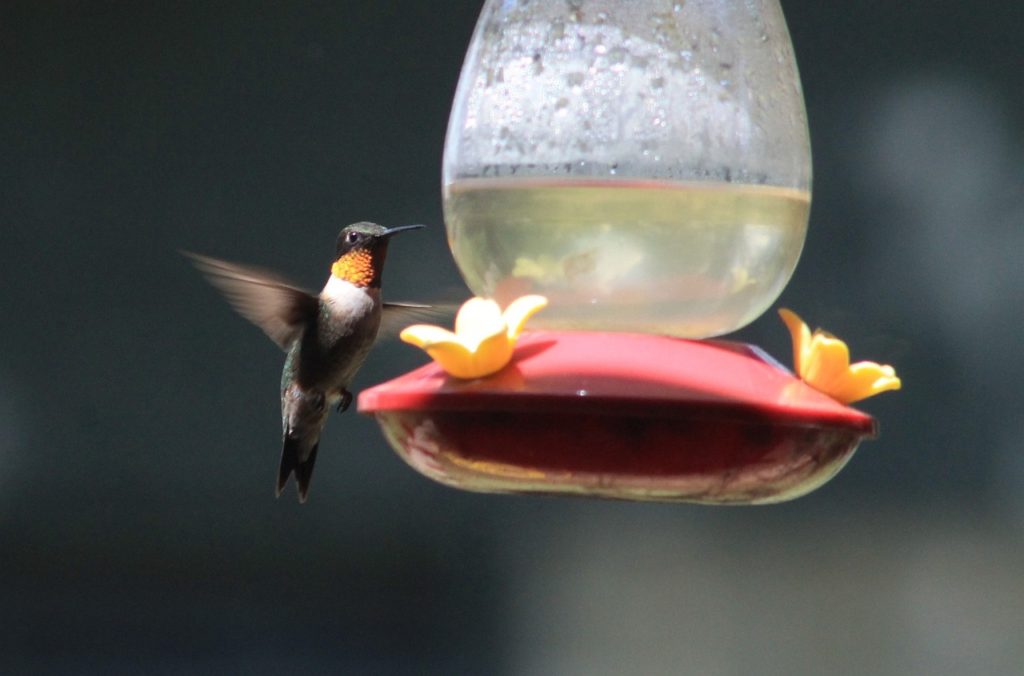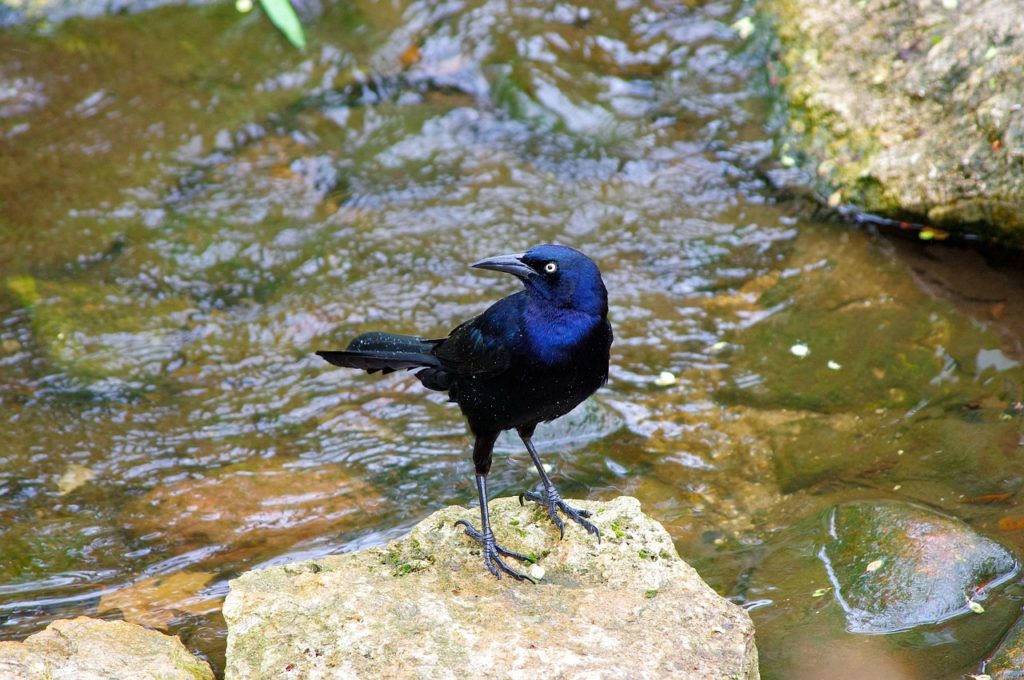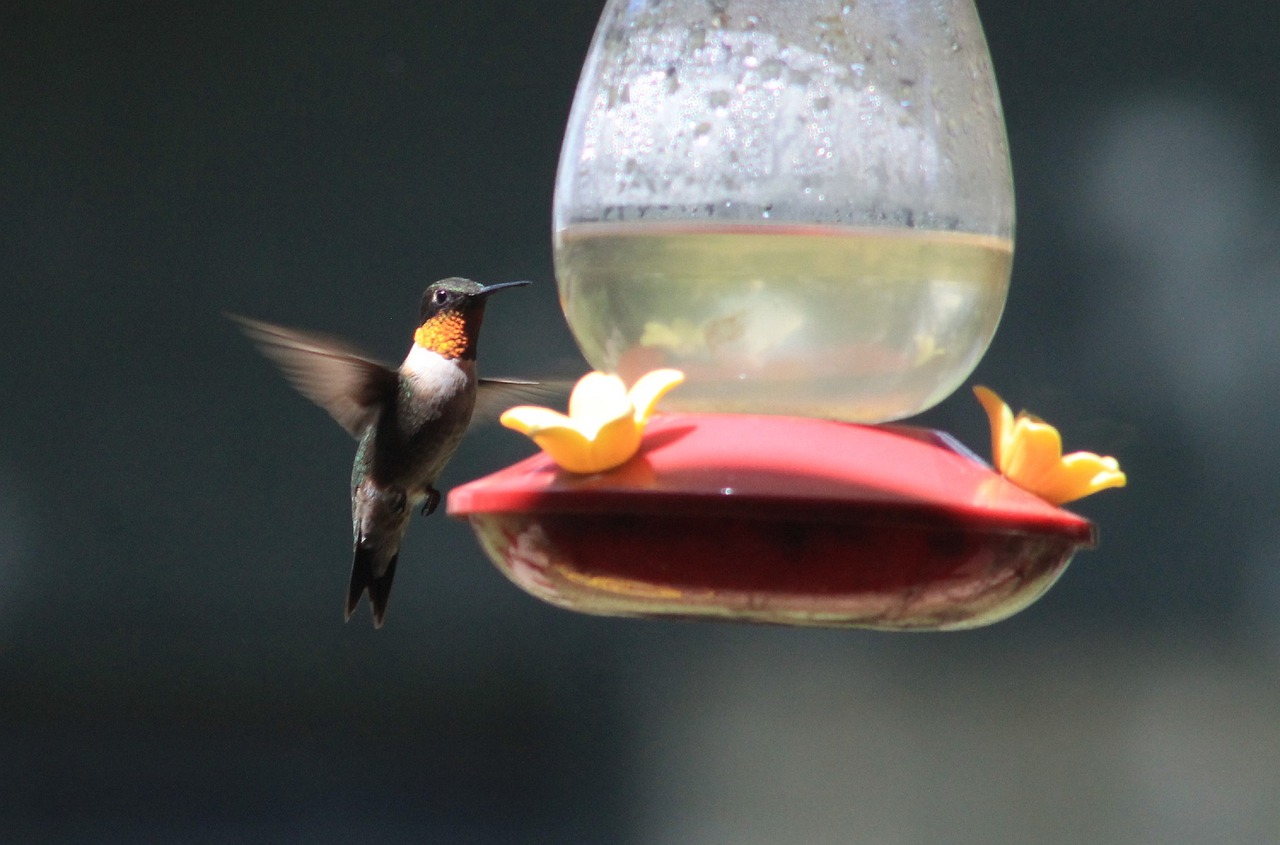Immerse yourself in the captivating world of the Golden-fronted Woodpecker, a unique bird that calls Texas home. This article will guide you on how to attract these fascinating creatures to your backyard. From choosing the right bird feeders and birdhouses to selecting premium bird food products, we will explore the various options available to create a welcoming environment for the Golden-fronted Woodpecker. Join us as we discover the best brands such as Kaytee, Perky-Pet, and Audubon, known for their expertise in birding supplies and bird conservation. Get ready to embark on a journey into the enchanting realm of the Golden-fronted Woodpecker in Texas.
Description of the Golden-fronted Woodpecker
The Golden-fronted Woodpecker is a unique and beautiful bird species native to Texas. It is characterized by its vibrant yellow plumage on its head, as well as its black and white body feathers. These woodpeckers are medium-sized, with an average length of 9-10 inches and a wingspan of 16-17 inches.
General characteristics
Apart from the distinctive yellow coloring on their heads, Golden-fronted Woodpeckers also have a white patch on their lower wing feathers. Male and female woodpeckers have similar physical features, but males may have a slightly larger red patch on the back of their heads. These woodpeckers have strong bills and long tongues, which they use to drill holes in trees and extract insects for food.
Habitat and distribution in Texas
Golden-fronted Woodpeckers are primarily found in the southern United States, with Texas being a prominent location for their habitat. They can be seen in a variety of wooded areas, including forests, woodlands, and even urban parks and neighborhoods. These birds are adaptable and can thrive in both dense forests and more open areas. They are most commonly found in the oak-juniper woodlands of Texas.
Diet and eating habits
The diet of the Golden-fronted Woodpecker consists mainly of insects such as ants, beetles, termites, and caterpillars. They use their strong bills to create holes in trees and extract their prey. However, these woodpeckers are not exclusively insectivores; they also feed on fruits, berries, nuts, and seeds when available. They are often seen foraging in trees, probing crevices, and drumming on tree trunks to uncover insects.
Breeding habits and life cycle
Golden-fronted Woodpeckers breed in late spring and early summer. They form monogamous pairs and engage in courtship behaviors such as drumming and calling. The female woodpecker lays 3-6 white eggs in a nest cavity that they excavate in dead trees or tree limbs. Both parents take turns incubating the eggs, which hatch after about 12-14 days. The young woodpeckers fledge after 25-30 days and become independent shortly after. Golden-fronted Woodpeckers typically have a lifespan of 5-6 years in the wild.
Importance of Attracting the Golden-fronted Woodpecker
Role in the ecosystem
The Golden-fronted Woodpecker plays a crucial role in the ecosystem as a keystone species. By drilling holes in trees, they create nesting cavities not only for themselves but also for other bird species and small mammals. These cavities provide shelter and protection, contributing to the overall biodiversity of the area. Additionally, their foraging habits help control insect populations, which can be beneficial for maintaining a balanced ecosystem.
Beneficial for bird watchers and enthusiasts
For bird watchers and enthusiasts, attracting the Golden-fronted Woodpecker to your yard can be a rewarding experience. These woodpeckers are known for their beautiful plumage and unique behaviors, such as drumming on tree trunks. Observing their feeding and breeding habits can provide hours of entertainment and learning opportunities. By creating an inviting environment for these woodpeckers, bird enthusiasts can enhance their bird-watching experience.
Contribution to biodiversity
The presence of Golden-fronted Woodpeckers in an area contributes to the overall biodiversity. By attracting and providing suitable habitat for these woodpeckers, it is possible to attract a diverse range of other bird species as well. The woodpeckers’ cavities are often reused by other cavity-nesting birds, such as bluebirds, tree swallows, and chickadees. This not only enhances the biodiversity of the birds in the area but also contributes to a healthier and more vibrant ecosystem.

Bird Seed and Feeder Preferences of the Golden-fronted Woodpecker
Preferred types of bird seeds
While Golden-fronted Woodpeckers mainly feed on insects and natural food sources, they may also be attracted to certain types of bird seeds. They have been known to visit feeders containing sunflower seeds, peanuts, and suet. Sunflower seeds are a favorite among many woodpecker species, as they are high in fat and provide a good source of energy. Offering a mixture of these bird seeds can help attract Golden-fronted Woodpeckers to your feeder.
Suitable bird feeder designs
When selecting a bird feeder to attract Golden-fronted Woodpeckers, it is important to choose a design that accommodates their feeding habits. Woodpeckers are adept climbers and prefer feeders with a vertical orientation, such as suet feeders or mesh bags filled with nuts. These feeders allow the woodpeckers to cling to the sides and easily access the food. It is also beneficial to choose feeders with sturdy construction to withstand the woodpeckers’ strong bills.
Feeder positioning and location
To attract Golden-fronted Woodpeckers to your feeder, it is important to consider the positioning and location of the feeder. Placing the feeder near trees or shrubs that provide natural cover and perching areas will make it more appealing to the woodpeckers. It is also recommended to keep the feeder at a height where it is easily accessible for the woodpeckers but protected from predators such as squirrels. Regularly cleaning the feeder and replenishing the bird seeds will also help maintain a consistent food supply.
Using Kaytee Products for Attracting the Golden-fronted Woodpecker
Effective bird seeds
Kaytee specializes in bird seeds, feeders, and accessories, making it an excellent choice for attracting the Golden-fronted Woodpecker. Their selection of sunflower seeds, peanuts, and suet can be enticing to these woodpeckers. Kaytee offers various blends and sizes of bird seeds, allowing you to choose the best option to attract the woodpeckers to your feeder.
Recommended feeders and accessories
Apart from bird seeds, Kaytee also offers a range of feeders and accessories that can enhance your bird-feeding experience. Their suet feeders are ideal for attracting Golden-fronted Woodpeckers, as they provide a durable and convenient way to offer suet cakes. Kaytee also offers feeder poles, hooks, and trays that can be used to customize and optimize the placement of your feeders. Their products are designed with quality and functionality in mind, ensuring a positive experience for both birds and bird enthusiasts.

Incorporating Perky-Pet Feeders in your Yard
Choosing the right feeder
Perky-Pet is known for its wide range of bird feeders, including options suitable for attracting the Golden-fronted Woodpecker. When incorporating Perky-Pet feeders in your yard, consider selecting feeders with metal mesh or suet cages. These designs allow the woodpeckers to cling onto the feeder and access the food easily. Perky-Pet feeders also often have removable tops or trays for easy cleaning and refilling.
Tips for setup and maintenance
To make the most of your Perky-Pet feeders and attract Golden-fronted Woodpeckers, it is important to set them up properly and maintain them regularly. Position the feeders in a quiet and relatively undisturbed area, preferably near trees or natural cover. This will provide a safe and comfortable environment for the woodpeckers to feed. Clean the feeders regularly to prevent the buildup of mold or bacteria, and replenish the bird seeds or suet as needed to ensure a consistent food supply for the woodpeckers.
Making Use of Droll Yankees Feeders
Selection of high-quality feeders
Droll Yankees is renowned for its high-quality bird feeders, including options suitable for attracting a variety of bird species, such as the Golden-fronted Woodpecker. When choosing Droll Yankees feeders, look for models with sturdy construction and durable materials. Woodpeckers can be quite strong and may require feeders that can withstand their feeding behaviors. Droll Yankees offers a range of feeder designs, including suet feeders and tube feeders with metal perches, which can be appealing to the woodpeckers.
Positioning these feeders effectively
To effectively attract Golden-fronted Woodpeckers using Droll Yankees feeders, it is important to position them strategically. Place the feeders near trees or vegetation that provide natural cover and perching opportunities for the woodpeckers. You can also consider using multiple feeders in different locations to increase the chances of attracting these birds. Regularly clean and sanitize the feeders to maintain a hygienic feeding environment for the woodpeckers.

Benefits of Brome Bird Care’s Squirrel-proof Feeders
How squirrel-proof feeders work
Squirrels can be a common challenge when attracting woodpeckers to your feeders. Brome Bird Care is renowned for its squirrel-proof feeders, which can help mitigate this problem. Their feeders are designed with mechanisms that make it difficult for squirrels to access the bird seeds or suet. Some of their feeders have adjustable weight settings, allowing you to exclude larger, heavier animals such as squirrels while still attracting Golden-fronted Woodpeckers.
Why they’re beneficial for woodpeckers
Squirrel-proof feeders from Brome Bird Care can be highly beneficial for attracting Golden-fronted Woodpeckers to your yard. By preventing squirrels from accessing the bird seeds, these feeders ensure a consistent food supply for the woodpeckers. This can help increase the chances of attracting and retaining these birds in your area, allowing you to enjoy their beauty and observe their fascinating behaviors without interference from squirrels.
Choosing the right Bird Seed from Wagner’s
Difference between seed mixes
Wagner’s is a leading brand for various bird seed mixes, including options that can attract the Golden-fronted Woodpecker. When choosing the right bird seed from Wagner’s, it is important to understand the difference between seed mixes. Some mixes may contain a higher percentage of sunflower seeds, which are preferred by woodpeckers. Additionally, mixes that include nuts or suet pellets can also be appealing to Golden-fronted Woodpeckers.
Which seed blend attracts the Golden-fronted Woodpecker
To specifically attract the Golden-fronted Woodpecker, consider using Wagner’s blends that contain a high proportion of sunflower seeds, peanuts, or suet pellets. Their “woodpecker blends” or “backyard blends” are often formulated to cater to the feeding preferences of woodpeckers. These blends provide a balanced mix of seeds and nuts that can help attract and sustain Golden-fronted Woodpeckers in your yard.
Birdhouse Selection for Golden-fronted Woodpeckers
Ideal birdhouse designs
Providing birdhouses for Golden-fronted Woodpeckers can enhance their breeding success and contribute to their population growth. When selecting birdhouse designs, opt for those specifically designed for woodpeckers. These houses typically have larger entrance holes and more spacious interiors, accommodating the woodpeckers’ size and nesting habits. Look for houses that are made of durable materials, such as cedar, to withstand the elements and provide long-lasting shelter for the woodpeckers.
Considerations for installation
When installing birdhouses for Golden-fronted Woodpeckers, it is important to consider certain factors for optimal success. Place the birdhouse in a quiet and secluded area, preferably near mature trees or wooded areas where the woodpeckers tend to forage. Mount the house on a secure post or tree trunk at an appropriate height to ensure stability and reduce the risk of predation. Regularly check and clean the birdhouses to maintain a healthy nesting environment for the woodpeckers.
Recommended birdhouse brands including Stokes Select and Woodlink
Stokes Select and Woodlink are notable brands that offer a variety of birdhouses suitable for attracting Golden-fronted Woodpeckers. Their birdhouses are designed with the specific needs of woodpeckers in mind, providing the ideal dimensions, materials, and features to attract and accommodate these birds. Both brands offer durable and weather-resistant birdhouses that can provide safe nesting spaces for Golden-fronted Woodpeckers.
Other Considerations for Attracting the Golden-fronted Woodpecker
Incorporating native plants and trees
In addition to providing suitable bird feeders and birdhouses, incorporating native plants and trees in your yard can greatly enhance the attractiveness to Golden-fronted Woodpeckers. Planting native trees such as oaks and junipers provides natural food sources, nesting cavities, and perching opportunities for the woodpeckers. Native plants also attract insects, which serve as a vital food source for the woodpeckers and contribute to their overall survival and well-being.
Maintaining a bird-friendly environment
To create a bird-friendly environment for Golden-fronted Woodpeckers, it is important to maintain a clean and safe yard. Regularly clean and sanitize bird feeders and birdhouses to prevent the spread of diseases. Minimize the use of pesticides and herbicides, as these can be harmful to not only the woodpeckers but also the insects they rely on for food. Create a diverse and natural landscape by incorporating a variety of plants and providing fresh water sources, ensuring the woodpeckers have access to all their needs.
Ensuring a consistent food supply
To attract and keep Golden-fronted Woodpeckers in your yard, it is essential to provide a consistent and reliable food supply. Regularly monitor and refill feeders with appropriate bird seeds, nuts, and suet to ensure the woodpeckers always have access to food. This will increase the likelihood of the woodpeckers returning to your yard and establishing it as a reliable food source.
Dealing with potential predators and threats
While attracting Golden-fronted Woodpeckers to your yard can be a rewarding experience, it is important to be aware of potential predators and threats. Keep bird feeders and birdhouses at a safe distance from branches or structures that can be used as launching pads by predators, such as cats or snakes. Regularly inspect and secure the birdhouses to reduce the risk of predators gaining access. Creating a safe and secure environment will help protect the woodpeckers and increase their chances of successful breeding and survival.
In conclusion, attracting Golden-fronted Woodpeckers to your yard can be a fulfilling endeavor that benefits both the birds and the surrounding ecosystem. By providing suitable bird seeds, feeders, and birdhouses, as well as incorporating native plants and maintaining a bird-friendly environment, you can create an inviting and sustainable habitat for these unique and beautiful birds. Whether you are a bird enthusiast or simply enjoy the presence of wildlife, attracting Golden-fronted Woodpeckers to your yard will undoubtedly bring joy and a deeper appreciation for nature.
